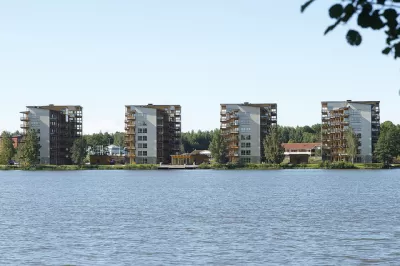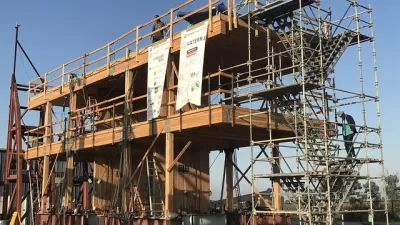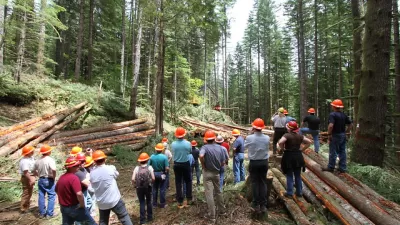After a long time lost in the woods, architects and engineers are rediscovering timber. Recent fire tests have demonstrated that timber can be a viable building material and meet existing code requirements.

Wood has been a default building material for millennia. Historically, one of the easiest and most effective ways to keep buildings standing upright was to fell large trees and shape them into load-bearing beams and columns. This changed in the 20th century, when the pliable possibilities of concrete and the seemingly immortal strength of steel lured builders away.
Thanks to a technology known as mass (or engineered) timber, wood construction is making a comeback for mid- and high-rise buildings. Mass timber was invented in the late 1800s, but attracted little interest until recently, when growing concern about buildings’ environmental impact led designers to search for alternative structural solutions.
Offering benefits ranging from carbon sequestration to job creation, mass timber (which includes variants such as glulam and CLT) has gained powerful allies among designers and policymakers alike. But in the United States, it has remained confined largely to high-profile showcase projects. Research conducted this spring could soon change this.
FULL STORY: Fire tests enable new timber typologies

Study: Maui’s Plan to Convert Vacation Rentals to Long-Term Housing Could Cause Nearly $1 Billion Economic Loss
The plan would reduce visitor accommodation by 25,% resulting in 1,900 jobs lost.

North Texas Transit Leaders Tout Benefits of TOD for Growing Region
At a summit focused on transit-oriented development, policymakers discussed how North Texas’ expanded light rail system can serve as a tool for economic growth.

Why Should We Subsidize Public Transportation?
Many public transit agencies face financial stress due to rising costs, declining fare revenue, and declining subsidies. Transit advocates must provide a strong business case for increasing public transit funding.

How to Make US Trains Faster
Changes to boarding platforms and a switch to electric trains could improve U.S. passenger rail service without the added cost of high-speed rail.

Columbia’s Revitalized ‘Loop’ Is a Hub for Local Entrepreneurs
A focus on small businesses is helping a commercial corridor in Columbia, Missouri thrive.

Invasive Insect Threatens Minnesota’s Ash Forests
The Emerald Ash Borer is a rapidly spreading invasive pest threatening Minnesota’s ash trees, and homeowners are encouraged to plant diverse replacement species, avoid moving ash firewood, and monitor for signs of infestation.
Urban Design for Planners 1: Software Tools
This six-course series explores essential urban design concepts using open source software and equips planners with the tools they need to participate fully in the urban design process.
Planning for Universal Design
Learn the tools for implementing Universal Design in planning regulations.
City of Santa Clarita
Ascent Environmental
Institute for Housing and Urban Development Studies (IHS)
City of Grandview
Harvard GSD Executive Education
Toledo-Lucas County Plan Commissions
Salt Lake City
NYU Wagner Graduate School of Public Service





























